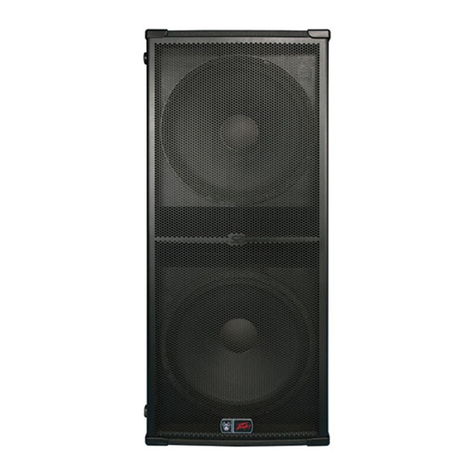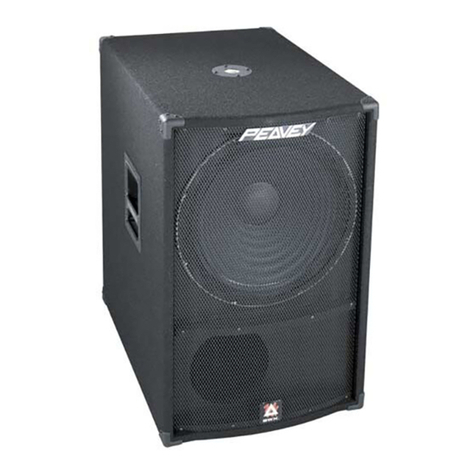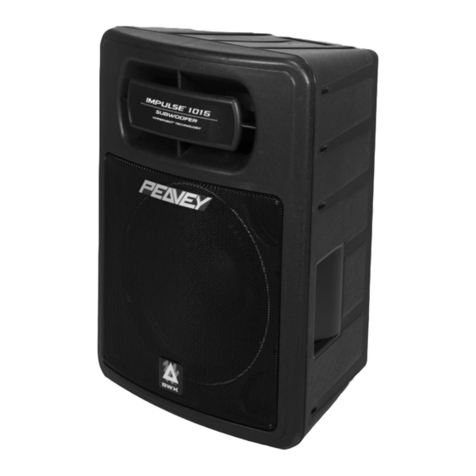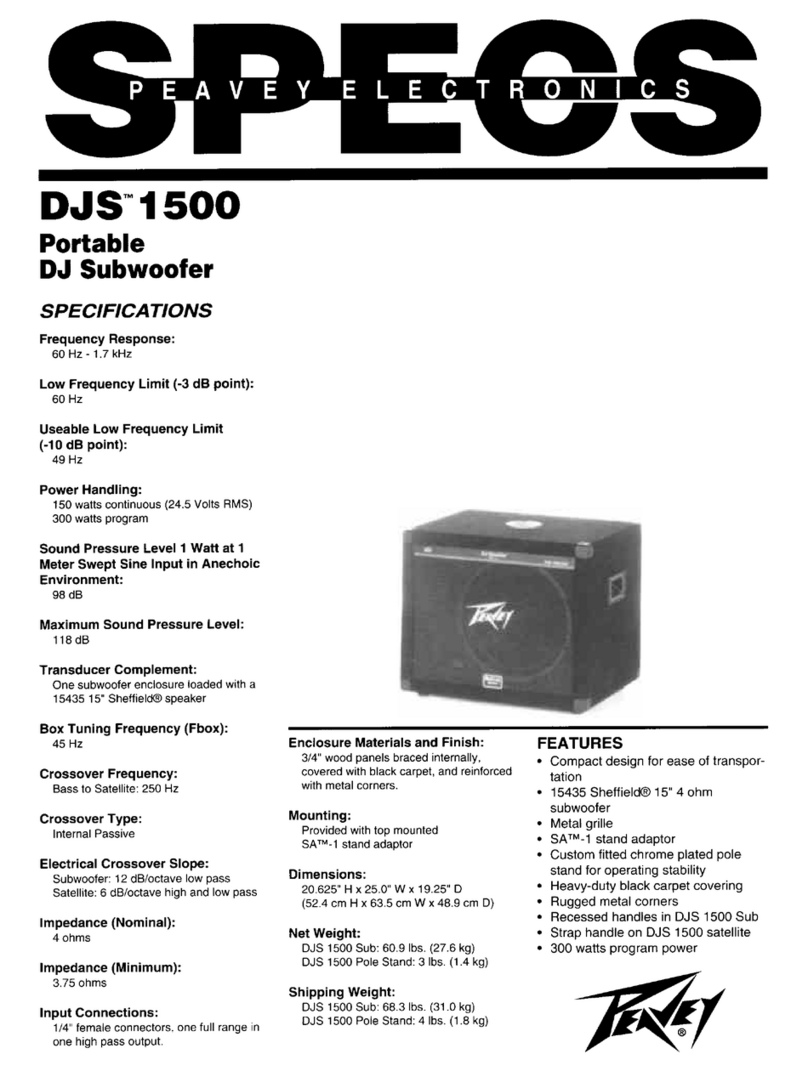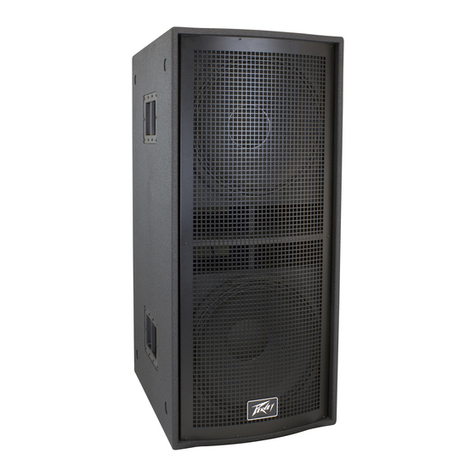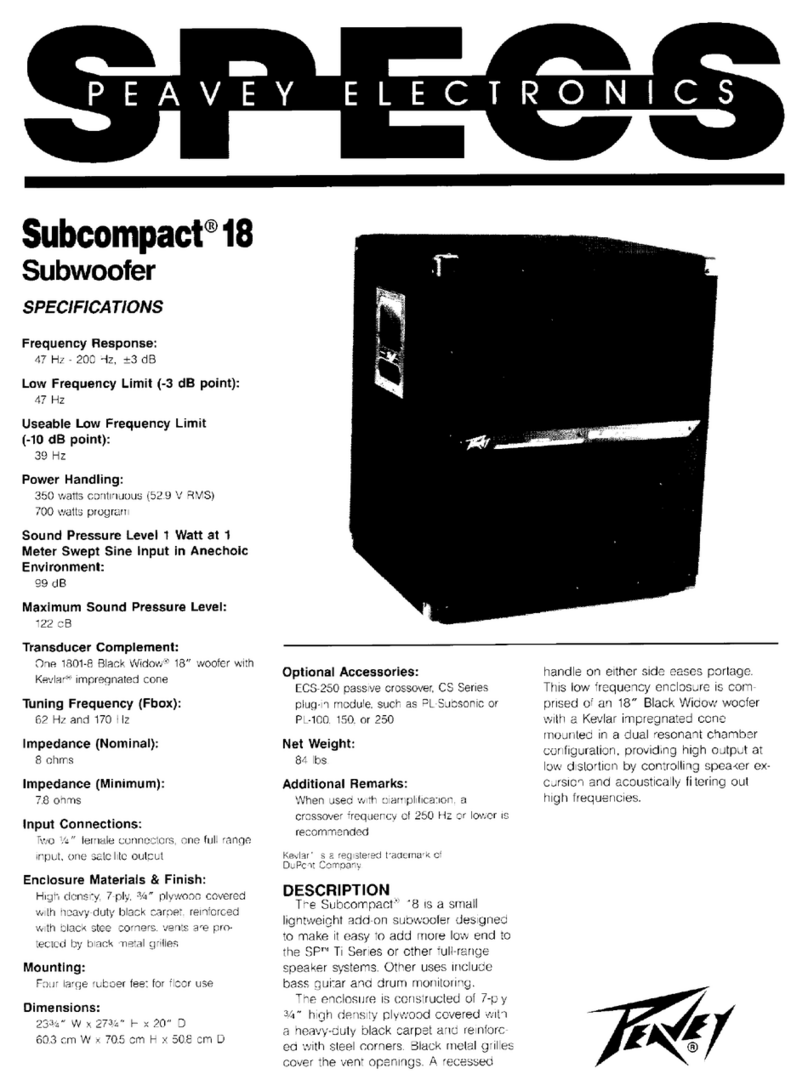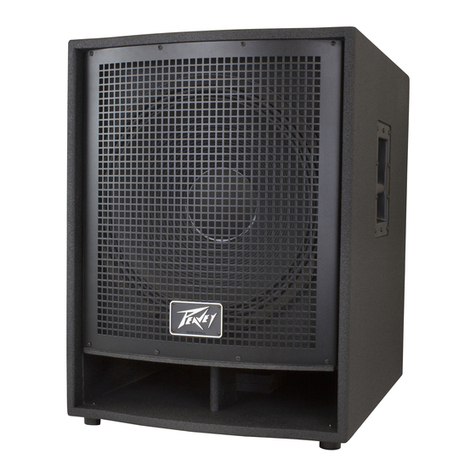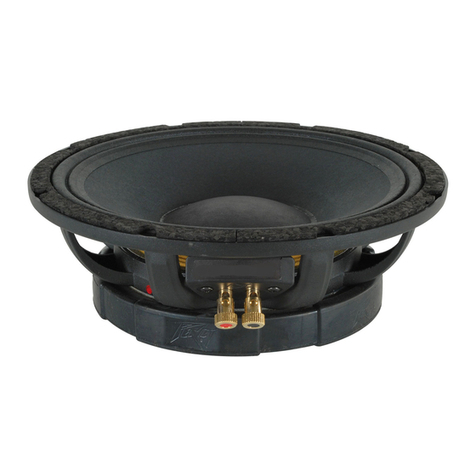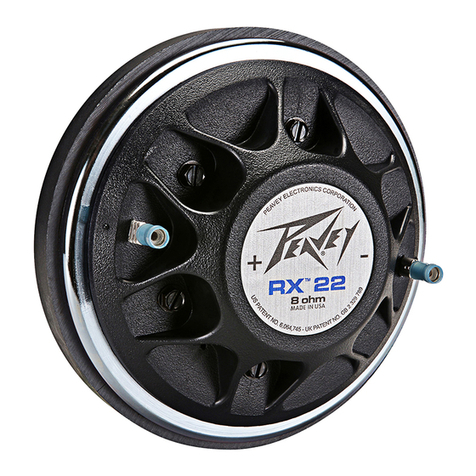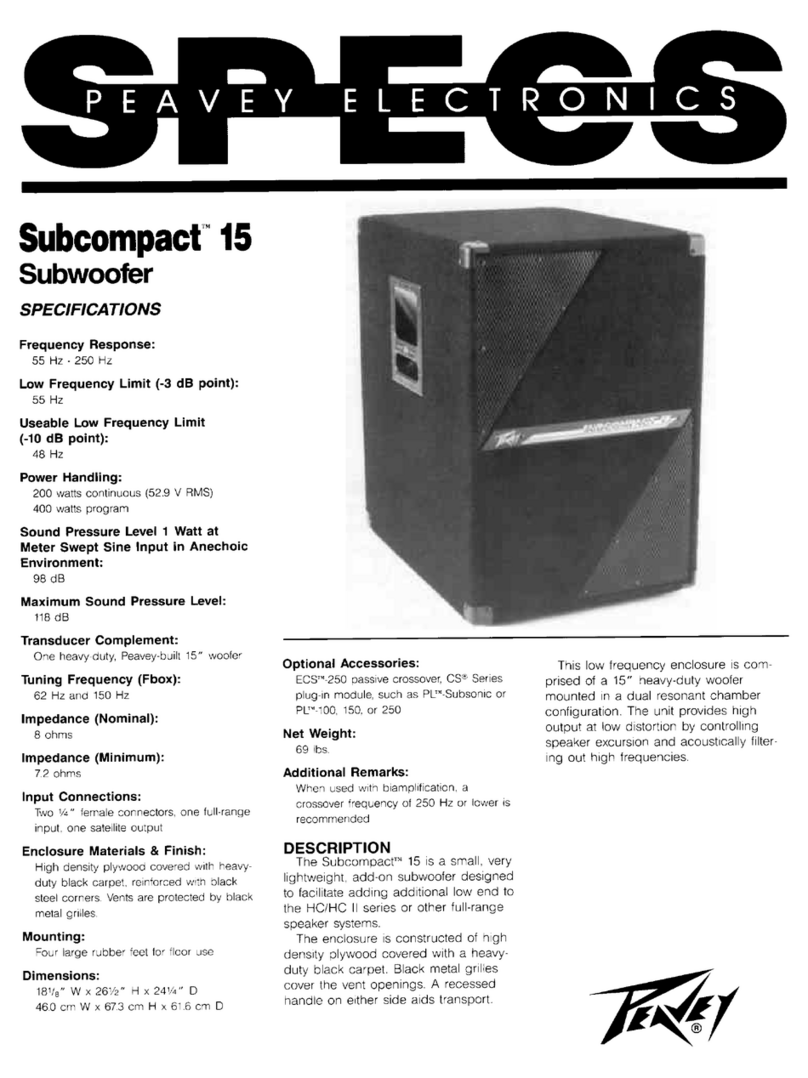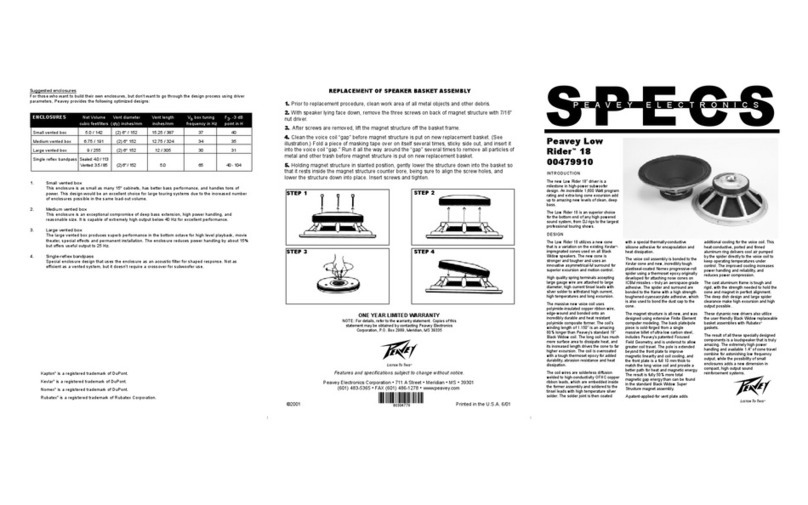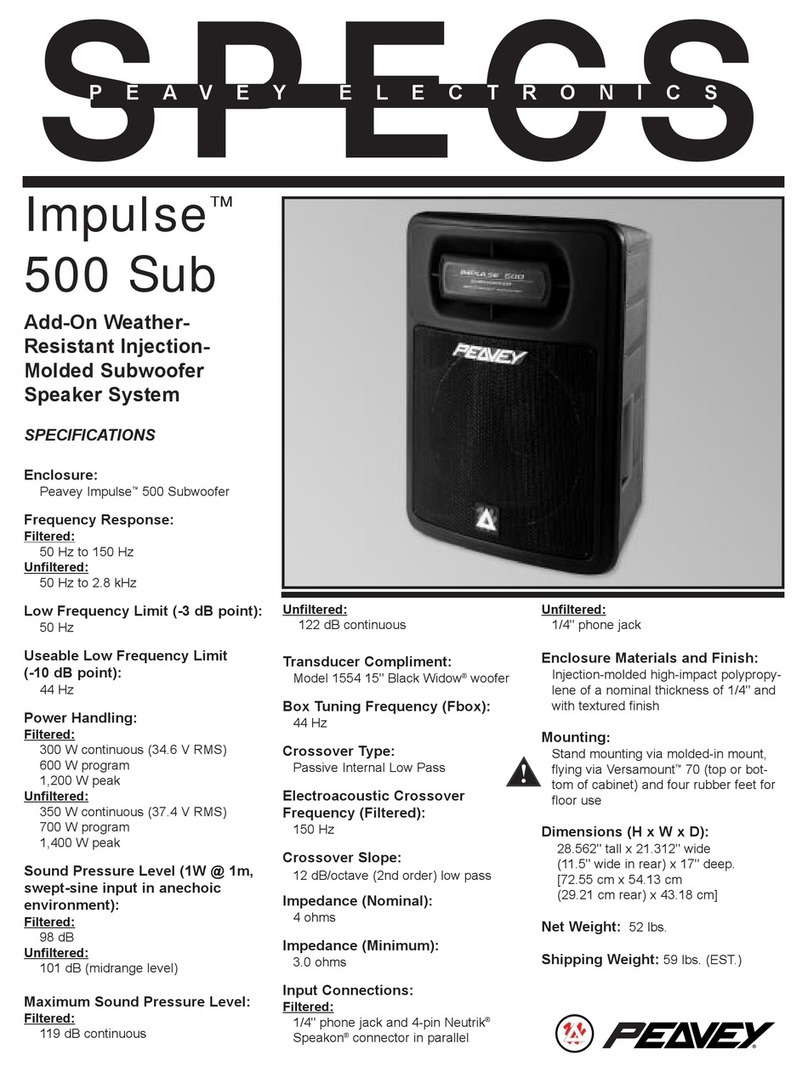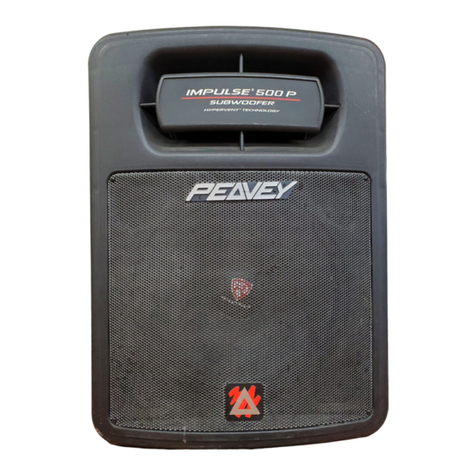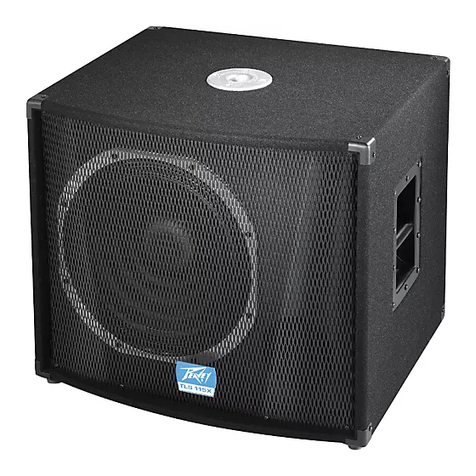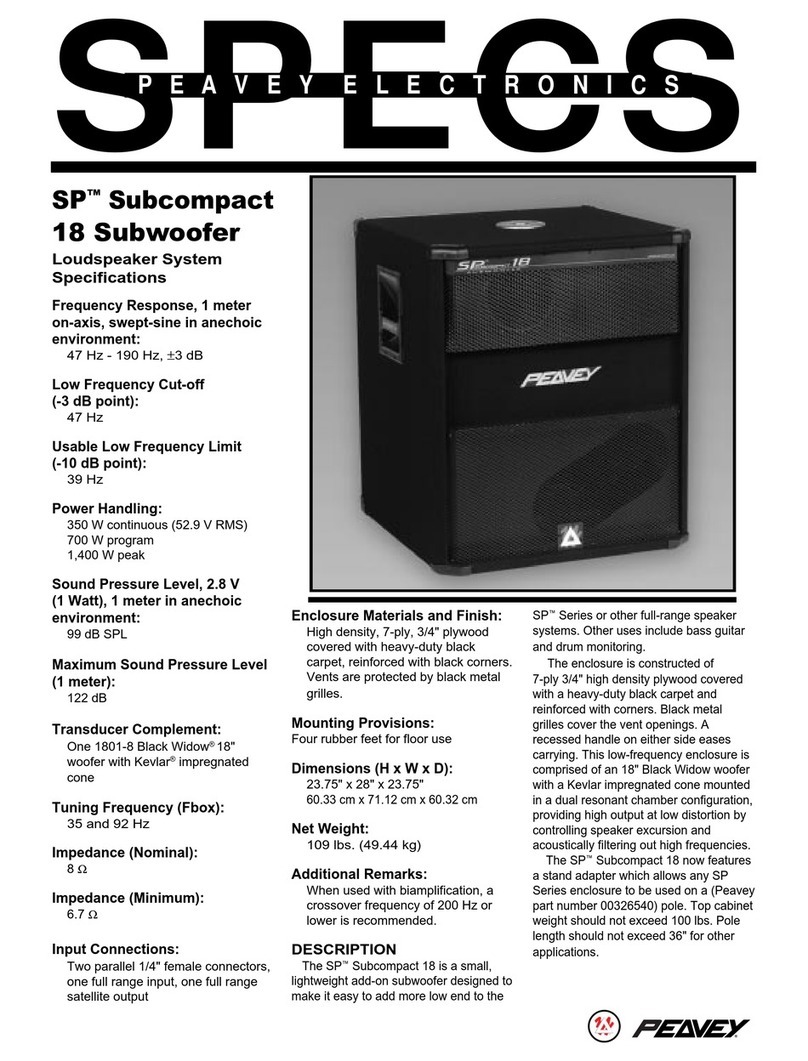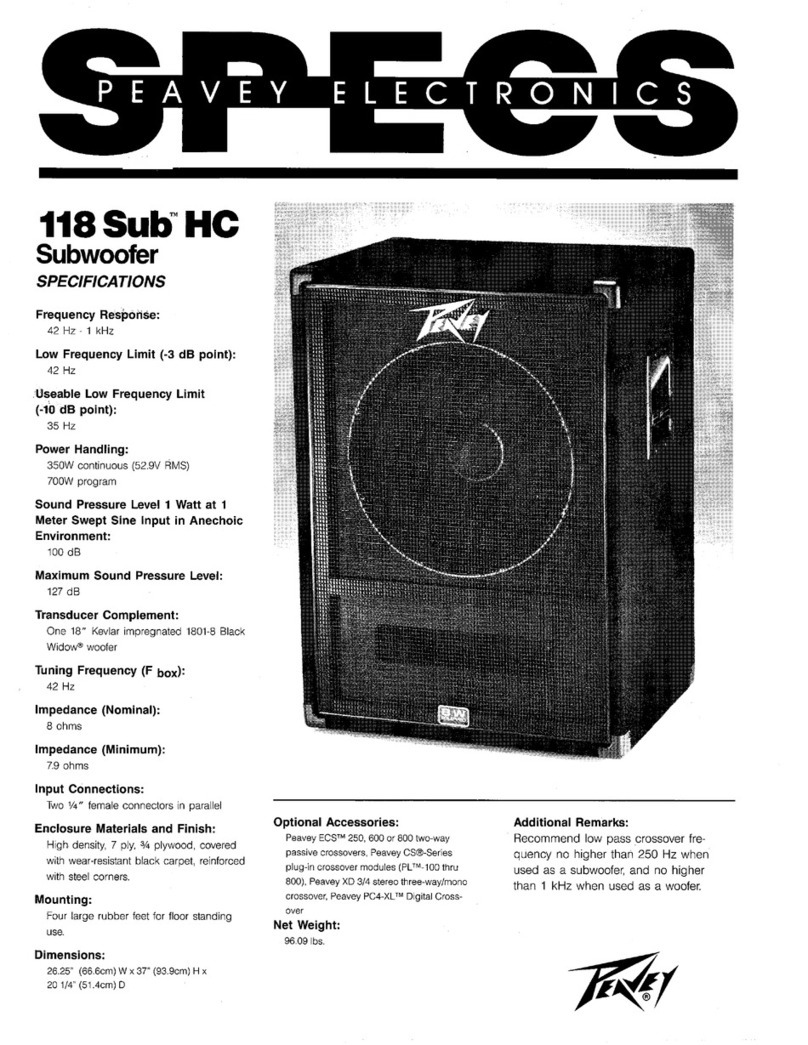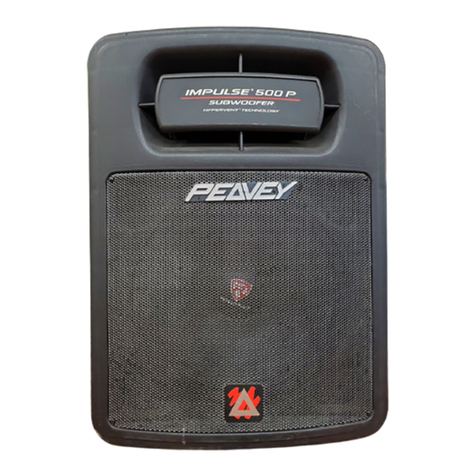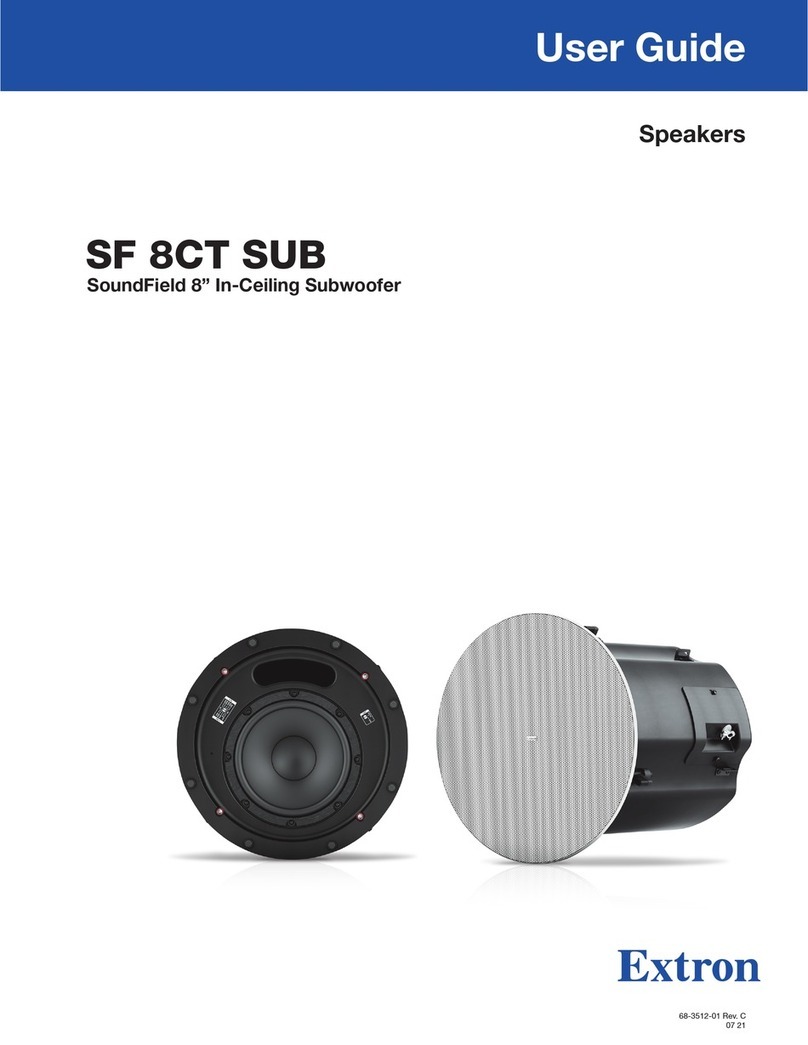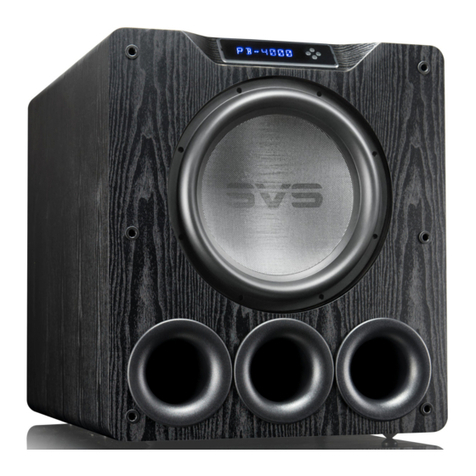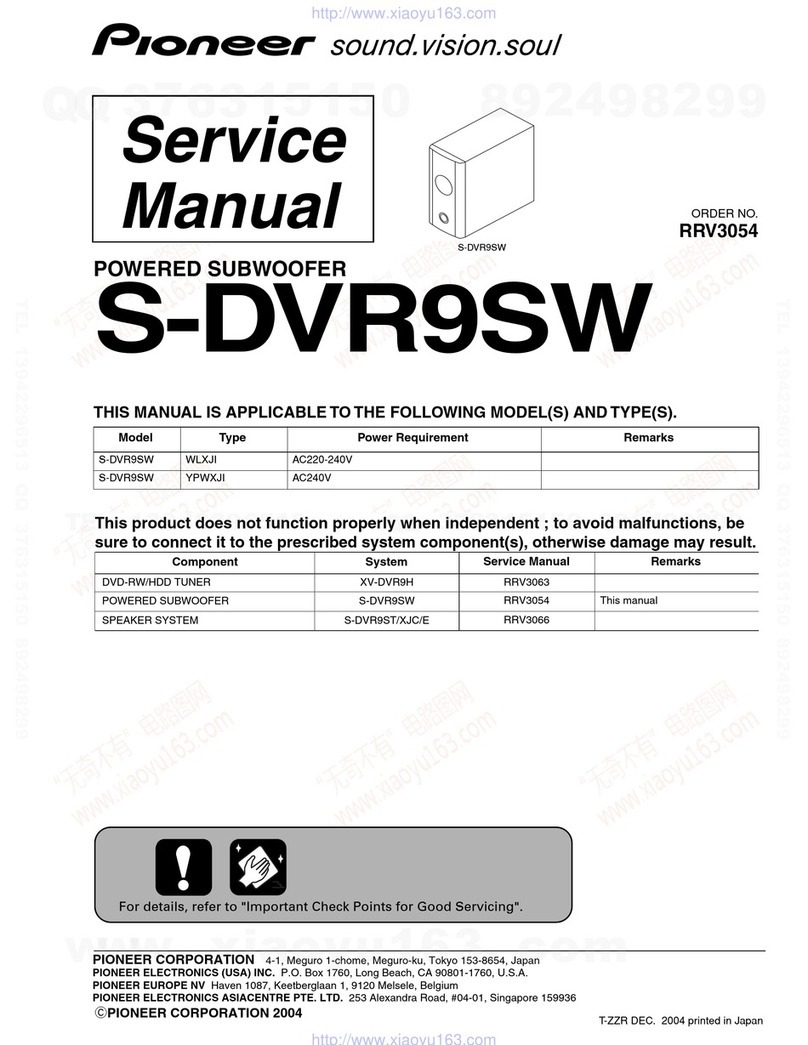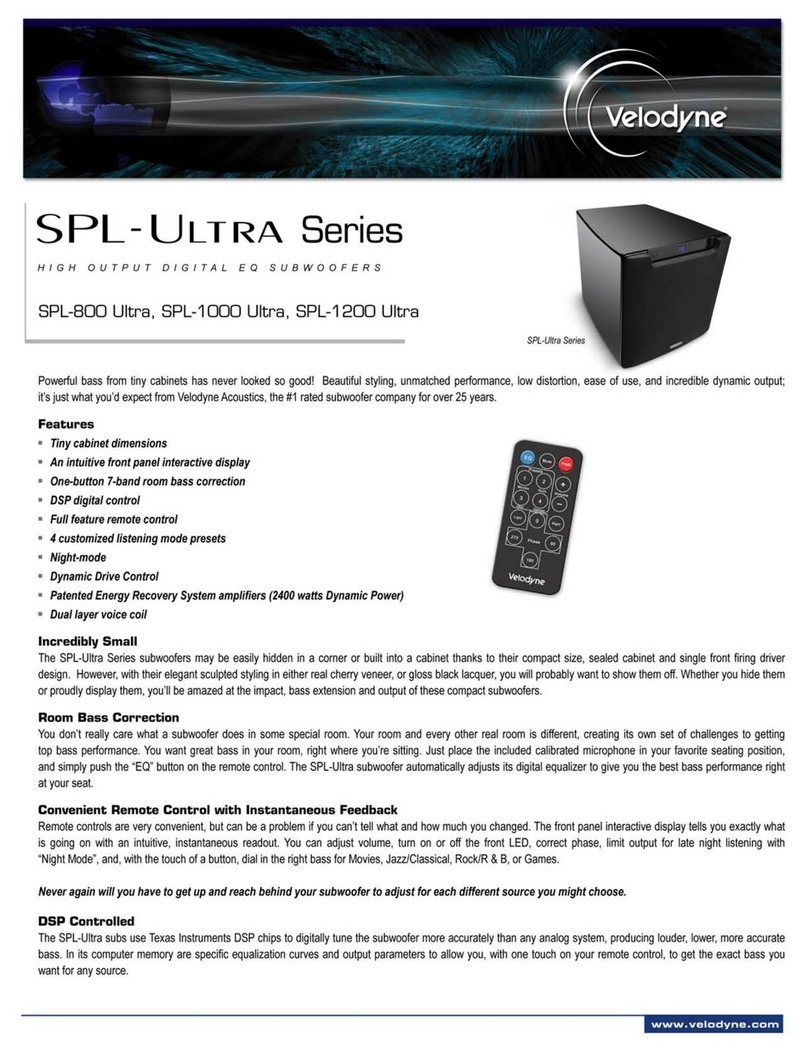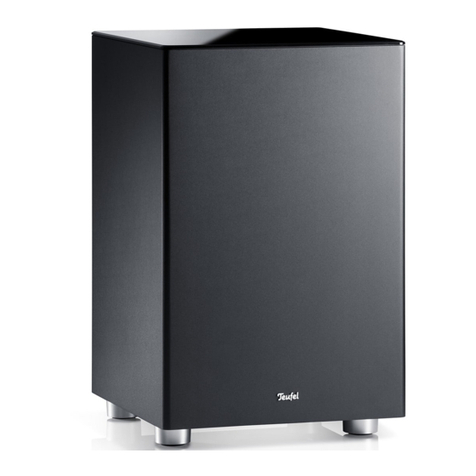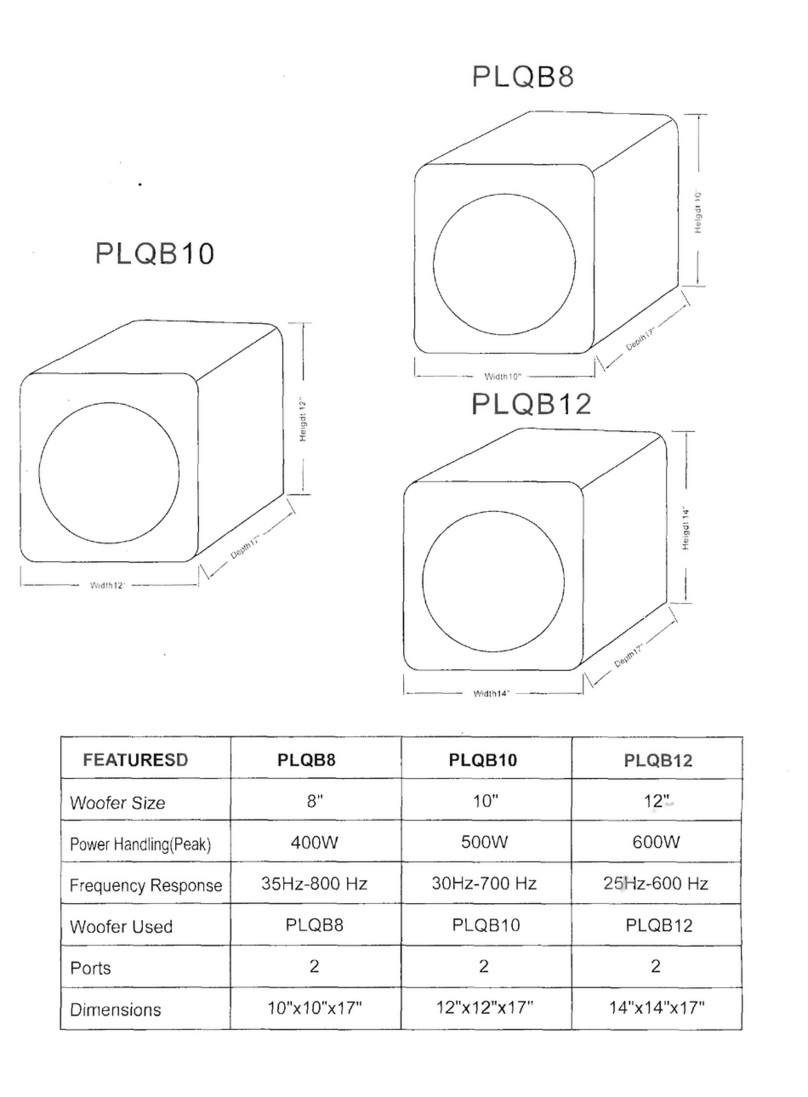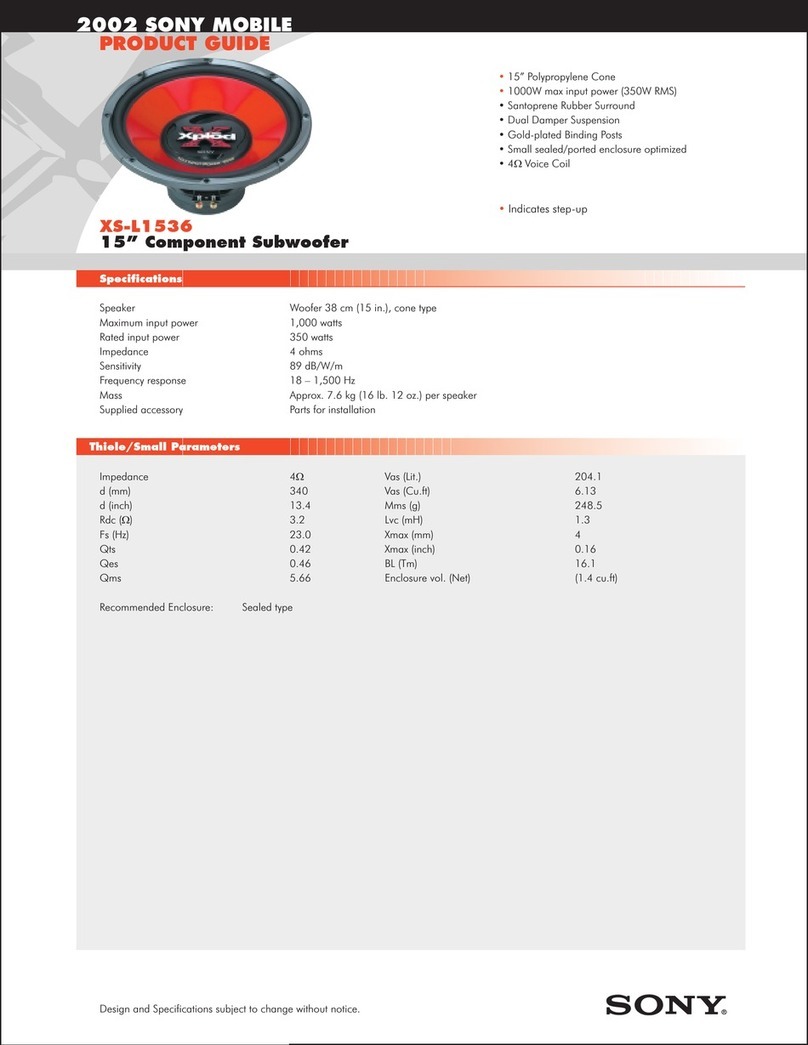
to control level only from the mixer, as this approach would tend to pick up excess noise. The best
practice would be to run a "hot" signal from the mixer down the cable to the DPE™ 118P Sub, and
then turn the Level control up only as much as necessary to reach full desired output. With this
approach, it is necessary to verify the mixer output is not clipping.
DISCONNECTING AC POWER TO THE DPE™ 118P SUB
We recommend that the Power switch (1) be used to turn the unit off first, and then the AC power
cord can be removed. This minimizes stress to the power amplifiers and the transducers from
turn-off transients. The power switch has an arc suppression capacitor to help during turn-off and
tends to make a clean disconnect from the AC power, while the power cord IEC connector can
make intermittent contact before finally becoming fully disconnected, e.g., as when wiggling the
cord.
NO OUTPUT AT ALL
First, make sure the unit has AC power and is turned ON. Make sure the LED on the input of the
power amp module is illuminated (6).
If not, make certain the ON/OFF switch (1) is in the ON position and check the IEC power cord
connection (3) by ensuring it is fully engaged and seated. Make certain the AC line cord is plugged
into a working AC outlet.
Finally, check the circuit breaker (2). (See the Rear Panel: circuit breaker section for safety
instructions.)
Once assured your unit is getting AC power, check that the DPE™ 118P Sub is getting a signal.
Temporarily disconnect the cable running to its inputs and connect it to some other device
capable of reproducing the signal (i.e., a power amp and speaker). If this produces a signal, make
sure that all Level controls (7) being used have been turned up to a satisfactory level (one-third to
halfway).
If the DPE™ 118P Sub has been subjected to direct sunlight or excessive heat, the built-in thermal
protection may have been triggered. If so, turn off the DPE™ 118P Sub and let it cool for a
sufficient amount of time.
If there is still no output, contact your authorized Peavey dealer or the Peavey International
Service Center.
HUM OR BUZZ
If the DPE™ 118P Sub is producing a hum or buzz, the problem could be AC outlet related. Try
plugging the DPE™ 118P Sub into a different AC outlet. If a different circuit (breaker) is used for
the mixer and for the DPE™ 118P Sub, it can sometimes cause hum problems. Unless it is not
practical, it is best to use the same wall outlet (breaker) to supply power to both the mixer and the
powered speaker.
Ensure that shielded cables have been used to route the signal to the DPE™ 118P Sub's inputs. If
speaker cables with 1/4" plugs are used as input cables instead of shielded cables, they will be
prone to hum or buzz.
Hum may be ground loop related. It may be helpful to lift the shield ground on a balanced cable
at the DPE™ 118P Sub end by only, using the ground lift switch (9). Check any input changes
carefully, by first turning down the Level control (7) before plugging and unplugging cables, or
lifting the shield ground at the speaker end by using the Ground Lift switch (9).
Check to make sure light dimmers are not on the same circuit as the DPE™ 118P Sub, the mixer
or any source devices. If light dimmers are used, it may be necessary to turn them full ON or full
OFF to eliminate or reduce hum. This is a typical AC wiring/light dimmer interference problem,
TROUBLESHOOTING
